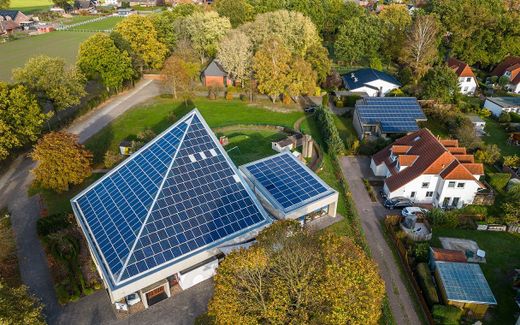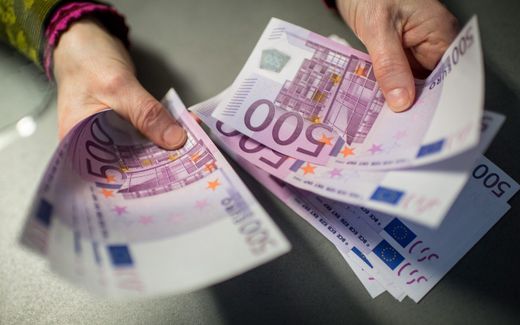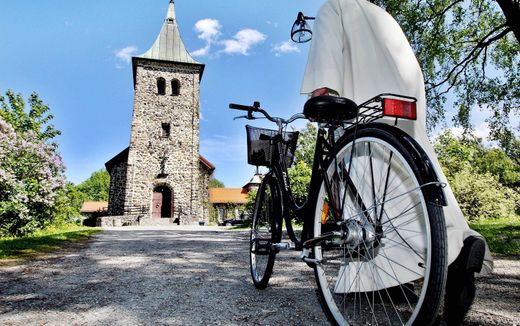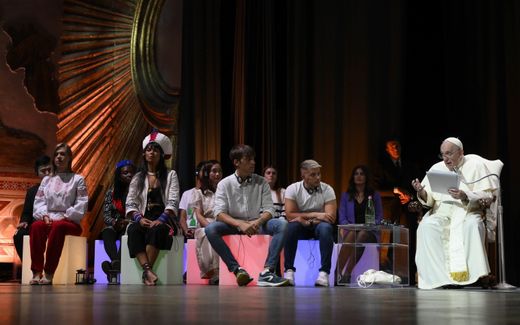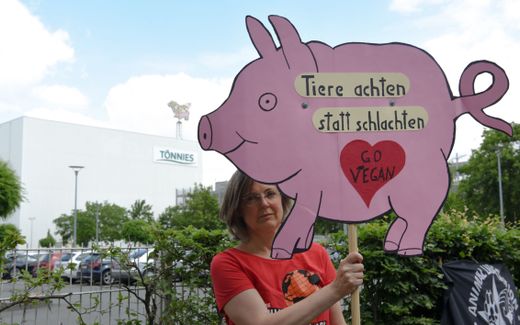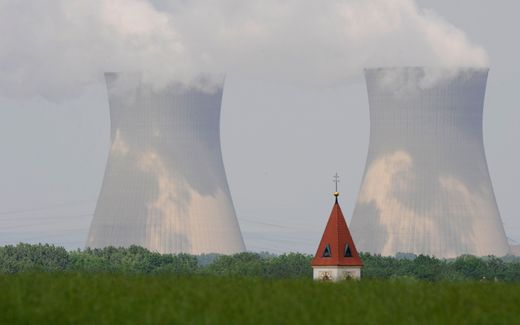The golden sun also shines on the church roof
05-07-2023
Christian Life
Jörn Schumacher, PRO
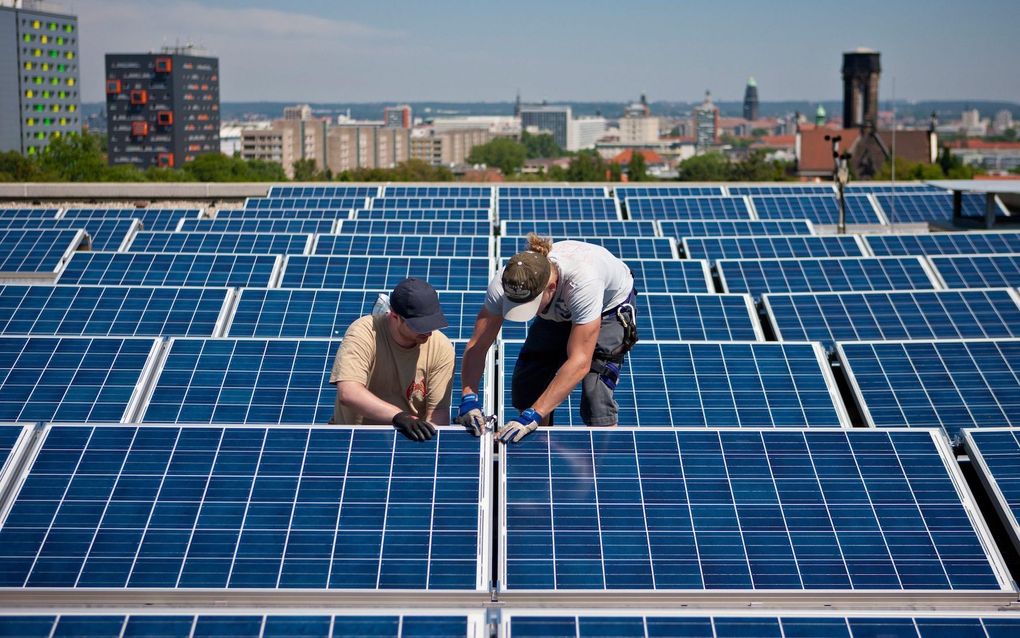
Energy from the sun is free of charge. And church roofs fit perfectly for this. Photo EPA, Oliver Killig
Christian Life
“The golden sun full of joy and delight”, wrote the German poet Paul Gerhardt around 1666. Did he already think of the golden benefits of solar panels? After all, the sun provides valuable energy free of charge. Church roofs are ideal for capturing this energy.
In the opinion of many physicists, Albert Einstein deserved a dozen Nobel Prizes. But he received precisely one. For the discovery of an effect that has become important again: the “photoelectric effect”. That allows us to tap into the sun’s free energy through solar panels on roofs.
In 2022, this Nobel Prize was celebrated for the hundredth time. The astrophysicist and television presenter Harald Lesch gave a lecture there. In passing, he asked an interesting question to churches.
The physicist (a “Protestant from head to toe”, as he confessed to PRO a few years ago) projected a photo of a church on the wall. Its roof was covered with solar cells. “Lux fit electricae” (light makes electrical energy) is what Lesch called the photo.
The physicist not only repeatedly emphasises the urgency of taking action against climate change in his lectures and in his television programmes. Lesch is also a member of the Bavarian Climate Council and the Protestant Church.
It has not escaped him: “All our churches are aligned in an east-west direction. That means they always have a perfect south side.” His suggestion: why don’t the churches mount solar panels on their roofs and claim: “We’ve always known it!” Physically, the efficiency of a classic church roof is 95 to 100 per cent, Lesch said.

Monument
Until now, one hurdle, in particular, stood in the way of photovoltaic (PV) systems being installed on centuries-old church roofs: the protection of historical monuments. However, the amendment to the Renewable Energy Sources Act (EEG), which has been in force since the beginning of the year, has brought movement into the game. According to it, the erection of PV plants is “in the overriding public interest”, and it may have to be given a higher value than the protection of monuments.
At a meeting of the heads of the building authorities in the Protestant Church in Germany (EKD) in April 2022, the paper “PV systems on listed buildings and church roofs” was drawn up. In it, the church experts “clearly commit themselves to photovoltaics on church buildings”. These are a “layer of time to be accepted” and “an essential building block on the way to climate neutrality for the Protestant Church”. It goes on to say: “We as a church see ourselves as having a special responsibility and role model function for the preservation of creation.” However, the plants should also do justice to the particular aesthetic demands of sacred buildings and form “calm and even surfaces”.
The EKD is examining whether, and if so, on which buildings PV systems can be installed, reads a climate protection guideline published by the EKD 2022. The potential of the church roofs, which are aligned to the golden sun, as calculated by the physicist Lesch, has also got around in the church.
“Solar energy could generate a large amount of energy on the roofs of church buildings, which would be extremely useful on the way to net greenhouse gas neutrality,” knows Oliver Foltin of the Research Centre of the Protestant Study Association (FEST). The head of the EKD’s Environmental and Climate Protection Unit in Heidelberg advises the regional churches on climate protection issues. “PV systems on roofs are among the most economical measures,” says Foltin.
Together with his colleague Volker Teichert, Foltin concluded the EKD Synod at the end of 2022 on the church’s efforts on the path to climate neutrality over the past fifteen years. There is a “gap between goals and reality”, complained the FEST experts.
The 2020 target of a 40 per cent reduction in the churches’ greenhouse gas emissions was not achieved, with a decrease of only 29 per cent. Foltin recommends, among other things: “As the most visible church climate protection measure, the expansion of photovoltaic systems on church roofs, which is still far from being exhausted, should be implemented as comprehensively as possible and as quickly as possible. Sacred buildings should also be included here.”
Sign of living faith
The previous climate protection concepts of the churches are not only getting on in years, but also have virtually nothing to offer in terms of solar installations. In 2016, the Protestant Church in the Rhineland (EKiR) took the trouble to calculate the existing potential for photovoltaics on church roofs. The experts only considered buildings suitable for orientation, monument protection and statics. They came up with 2,650 buildings (as of 2015), bringing an electricity yield of 1,900,000 kilowatt-hours.
The Protestant Church in Central Germany recently published a brochure entitled “Photovoltaics for Church Congregations and Church Districts”, which contains comprehensible explanations of photovoltaics, including technical and legal tips for their installation on churches.
“99 per cent of our churches are listed,” admits Jörn Budde, head of the environmental office of the Protestant Church Berlin Oberlausitz (EKBO). “We have around 2,000 listed churches. And the monument conservators rightly ask us: Why does the PV system in the village have to be on the listed building of all things? There is also the industrial hall or the stable.”
Budde’s office implements the regional church’s environmental and climate protection concepts. Budde says his church has been pursuing Lesch’s idea for years. The demand is growing. “Many church congregations see a photovoltaic system as a visible sign of their lived faith in the sense of preserving creation,” Budde says.
The increased energy prices due to the Ukraine war are another argument. But not everyone is always enthusiastic about the idea of a PV system on the church roof, Budde knows. “It’s the same rift that runs through society.”
Pope Francis
The Roman Catholic Church is the largest private landowner in Germany. With assets in land, real estate, investments and shareholdings estimated at 270 billion euros, there would be a lot of potential to tap into solar energy. In 2015, Pope Francis focused on environmental and climate protection in his second encyclical entitled “Laudato Si”; and in a message for the World Day of Prayer for the “Integrity of Creation” in 2019, the Pope emphasised the “climatic emergency” that threatens nature and life.
However, there are no concrete announcements or measures from Rome. The German Bishops’ Conference merely refers to the individual dioceses. Their climate protection concepts are already several years old, and photovoltaics is almost only used in the subjunctive. According to a 2018 survey, there are 17 photovoltaic systems in the Catholic diocese of Mainz.
Rectory
The church roof in Seckenhausen near Bremen, built in 1968, is completely covered with solar panels, as are the annexe and the former rectory. The system, with a total area of 600 square metres, produces up to 41,000-kilowatt hours of electricity per year – significantly more than the parish consumes.
After evaluating questionnaires, the diocese of Eichstätt came up with 35 photovoltaic systems; they say there are “hardly any” photovoltaic systems in the church sector in the Archdiocese of Paderborn.

Funds
How to finance this? That is one question that soon arises in every church congregation regarding PV systems. This is where a “solar fund” like the one in Bavaria can help. It enables church congregations to make a sustainable commitment without investing their own money and finding someone to take care of the solar system for at least 20 years.
The concept of Clemens Bloß, director of the “Evangelische Solarfonds”, can be summarised like this: On one side are parishes with roofs but no money, and on the other side are parishes with money but no roofs. Clemens Bloß brings both parties together.
Shareholder contributions and loans from the Bavarian Church finance the photovoltaic systems. The parish does not have to pay anything for the system’s installation. A congregation that leases a roof saves 15 per cent on every kilowatt hour of electricity used by the photovoltaic system compared to the price that has to be paid for electricity from the grid. At the end of the government-subsidised useful life, the church can take over the system for one euro and then sell the green electricity to an energy supplier at the market price or use it itself. “A church PV system pays for itself after about 13 to 14 years,” says Bloß.
Hospitals
He set up the first solar fund in the Fürth deanery in 2010. In the meantime, demand has increased enormously, says the trained business economist. Bloß is now in charge of four funds. About 50 parishes act as investors, and about 150 parishes and church institutions make their roofs available.
Over the years, more than six million euros have flowed into the funds. But does it necessarily have to be the church roof? Bloß is also sceptical. The building is hardly used more than once a week for Sunday services. Unfortunately, it is difficult to store the solar power generated. And to send it to the surrounding buildings, power lines would have to be laid, but that is forbidden.
Perhaps it would be better to use the large, non-listed buildings in the village, such as stables or warehouses. “The motto is: Generate electricity where it is needed.”
Bloß, therefore, advises churches to first use other buildings for PV systems, such as kindergartens. Here, electricity demand and supply coincide. Hospitals also need a lot of electricity, but the solar systems on their roofs are hardly noticeable.
Global temperatures are rising. Climate change is a reality. Hopefully, the “golden sun” will not one day become a symbol of terror in the face of withered fields and dried-up riverbeds. If it’s not climate change, maybe it will end up being the prospects of energy prices that make churches in the country consider photovoltaics on the roof.
“My eye beholdeth what God hath built for His glory, to teach us how His mighty and great is His ability”, says Gerhardt’s song “Die güldne Sonne” (The Golden Sun). And further: “Let me see with joy, without envy, the blessing that you will place in my brother’s house and in my neighbour’s house.”
This article was published in the paper version of PRO Medienmagazin in June 2023, and translated by CNE.news
Related Articles

